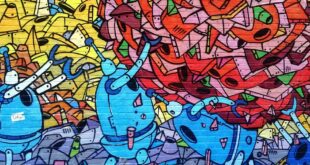The Ultimate Guide to Typography Terms and Techniques
Unlock the secrets of typography to enhance your design skills!
Introduction
Typography is not just about picking a fancy font for your next project. It is an art form that can elevate your design to a whole new level. Understanding typography terms and techniques will enable you to communicate effectively through the medium of text.
1. Typeface vs. Font
Many people confuse these two terms, so let’s clarify. Typeface refers to the overall design of letters, numbers, and symbols, while font specifically refers to a particular style within a typeface, including size and weight variations.
2. Kerning and Leading
Kerning refers to adjusting the space between individual characters within a word, while leading refers to the distance between lines of text. Play around with these attributes to achieve optimal readability and visual harmony.
3. Tracking
Tracking, also known as letter-spacing, is the uniform adjustment of spacing across a range of characters or an entire text block. It can be handy when you want to highlight titles or emphasis a specific portion of text.
4. Alignment
Alignment helps to create order and establish hierarchy in your design. You have four main options: left-aligned (flush left), right-aligned (flush right), centered, and justified alignment. Each creates a different visual appeal and impact on readability.
5. Hierarchy
By utilizing different font sizes, weights, and attributes, you can establish a clear and effective hierarchy in your text. Your primary message should be dominant, guiding the reader’s eye gracefully through your design.
6. Contrast
Contrast plays a crucial role in making your text stand out and be visually captivating. Play with contrasts in terms of size, weight, color, and even typeface pairing to create eye-catching headlines, subheadings, and body text.
7. Pairing Typefaces
Choosing the right combination of typefaces can significantly impact the mood and message you convey. Aim for complementary pairings that create harmony while adding a touch of visual interest.
8. Readability and Legibility
The ultimate goal of typography is to ensure information is easily consumed. Pay attention to legibility (how easily individual characters are recognized) and readability (how easily chunks of text are read) to ensure your typography works harmoniously with your design.
Conclusion
Congratulations! You’ve journeyed through the ultimate guide to typography terms and techniques. Armed with this knowledge, you can now confidently harness the power of typography to breathe life into your design projects. Remember, typography is not just a technical aspect of design; it’s an art form that allows you to express your creativity and captivate your audience. So, go forth and embrace the magic of typography!
 Mind Uncharted Explore. Discover. Learn.
Mind Uncharted Explore. Discover. Learn.




